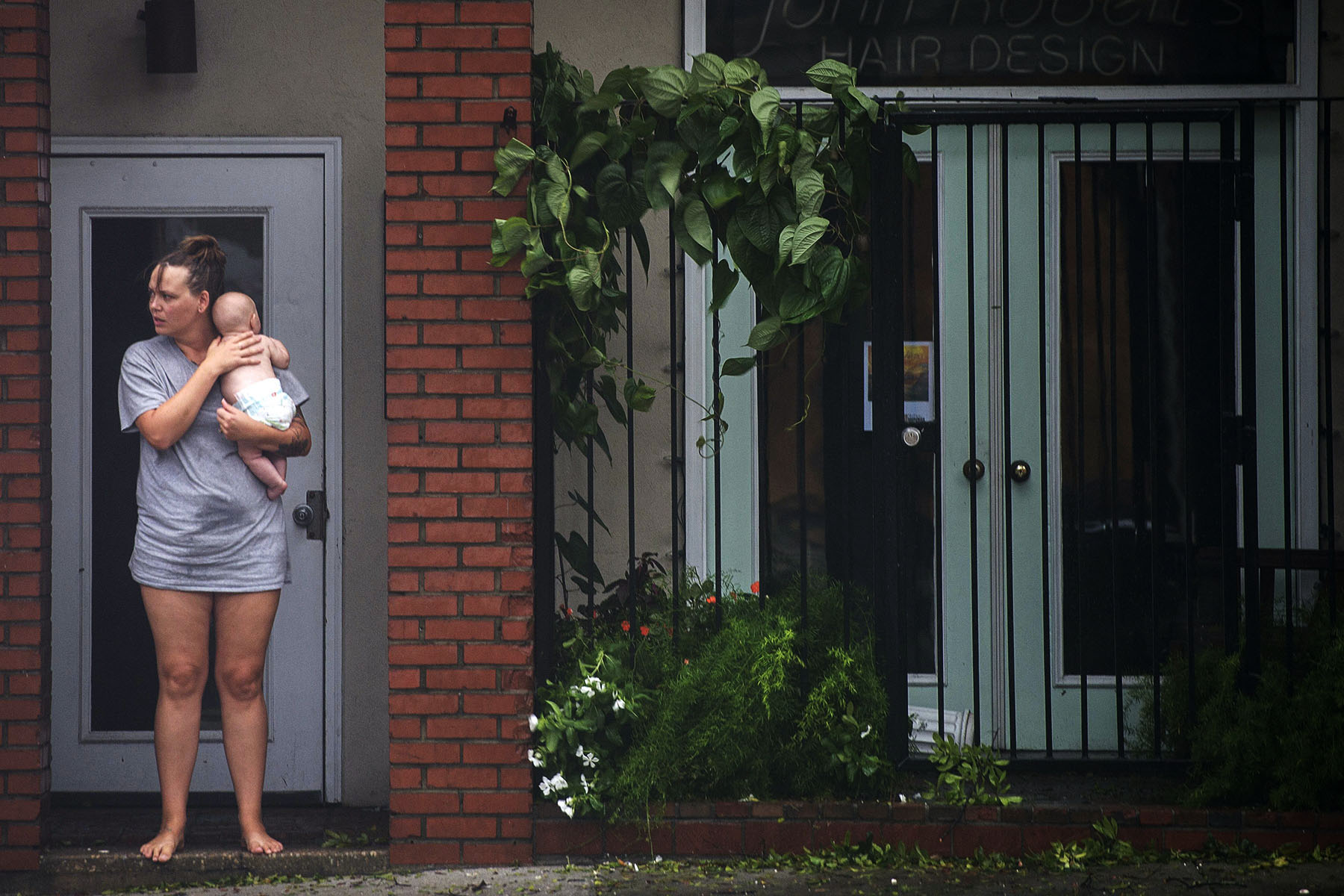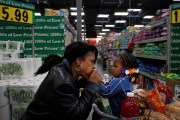When Hurricane Florence hit the Carolinas in 2018, causing $24 billion worth of damage, the South Carolina WIC agency jumped into action.
Dispatching their mobile clinics to flooded areas across the region, the agency was able to reach participants to replace lost vouchers, which are used to purchase things like infant formula and healthy foods, and enroll newly eligible residents.
WIC – the program that distributes the federal supplemental nutrition program for women, infants and children — is administered under many states’ health departments, and the clinics addressed other public health concerns too, including vaccinating people for tetanus, a risk after a flood because of sharp debris.
It’s just one example of the unique ways that WIC reaches the same population that is also the most vulnerable to the impacts of natural disasters: low-income pregnant and postpartum people, children and infants.
But for months, funding for the program, which serves approximately 6.5 million women and children under the age of 5, as well as approximately half of the infants born in the United States has been in peril.
-
Previous Coverage:
After the United States Department of Agriculture (USDA) requested an additional $1 billion to meet the growing needs of the program and to account for inflation, WIC became caught up in a spending battle between Republicans and Democrats. On Sunday, Congress released a proposed spending package that would include those funding increases with a vote expected by Friday. If passed it’ll bolster a program that has become increasingly important for disaster resiliency in a climate-changed world.
“Imagine being a single mom in a disaster situation and you’re trying to get your kids all wrangled up, you may have a job that you’re trying to figure out and maybe your house is flooding,” said Kelly Horton, chief program officer for the Food Research and Action Center, a national advocacy organization. “WIC is there to help prevent even more stress from happening and it makes sure that people don’t lose access to healthy foods.”
Last year the country broke disaster records, clocking in 28 different billion-dollar disasters, including tornados, flooding, hurricanes and a wildfire, according to the National Oceanic and Atmospheric Administration. In each of these events, government agencies like the Federal Emergency Management Agency, state disaster response teams, and a range of community partners work together to assist residents. The WIC program is part of these efforts too, with 1900 local agencies and 10,000 WIC clinic sites located in every state and five U.S. territories tasked with ensuring their participants are able to access food even in times of crisis.
“We have a very large on-the-ground footprint. So in the event of a disaster, it’s possible that WIC will have a more direct community presence than other disaster programs,” said Nell Menefee-Libey, senior manager of public policy for the National WIC Association, a nonprofit advocacy organization.
WIC helps participants purchase healthy foods, access breastfeeding counseling and provides health care and social service referrals for pregnant and postpartum women and children, and during disasters it can connect participants to other agencies like FEMA, temporary housing or area food banks.
“Particularly in a disaster situation, you’d want to make sure that those services continue and those referrals continue,” Horton said. “It’s also a way for the government to continue to get information out to people within a disaster situation who are already participating and engaged in that service.”
WIC also plays a crucial role in promoting chestfeeding, advocates say, which in times of disaster is the safest way to feed an infant according to the Centers for Disease Control and Prevention (CDC), because it does not require access to clean water or an area to clean and sterilize bottles.
WIC has helped to increase chestfeeding rates for low-income women of color, who are most impacted by disasters. This is also a group that has historically opted to use formula due to various barriers to chest feeding. Many low-wage industries don’t offer adequate paid time off or lack safe spaces for lactation at work.
“The program has been very instrumental in helping Black women to breastfeed because WIC has such a favorable intergenerational connection to our community,” said Tyra Gross, associate professor of public health at Xavier University in Louisiana who has studied breastfeeding rates among Black women.
During disasters, WIC clinics take on additional measures to ensure their participants can continue breastfeeding in what is often a stressful situation.
In Santa Barbara, California, where there have been mudslides and flooding, WIC has coordinated with other disaster response organizations like the Red Cross to supply equipment like manual breast pumps, said Susan Liles, nutrition services director for the Santa Barbara County Public Health Department. WIC clinics also have trained lactation specialists and operate a 24/7 hotline to help with chestfeeding.
WIC also connects otherwise hard-to-reach communities to disaster relief. In “Hawai’i, the Hawai’i Children’s Action Network received a grant from the USDA to reduce barriers to WIC by creating new materials in languages that better serve Native Hawaiian, Pacific Islander and Filipino families. When a wildfire swept through Maui, the organization was able to work with FEMA to get information out about WIC and other services in multiple languages to residents. In California, where 62 percent of Latino infants and children qualify for the program, Liles said clinic staff are often bilingual or trilingual.
And unlike the food stamp program known as SNAP, WIC does not check immigration status, making it a crucial support for undocumented people, advocates say.
“They are a more vulnerable population that we serve, and sometimes getting assistance from government organizations like FEMA or [others] that tend to come up after disasters there is a lot of hesitancy and lack of trust with government organizations,” Liles said. “So if they can hear from [a WIC clinic], ‘This is where you go, this is what you do, this is okay,’ that sometimes helps that person take that next step and get that assistance.”
The USDA specifies that WIC is not designed to be a disaster assistance program, meaning eligibility doesn’t change in times of disaster. But, a new law, the Access to Baby Formula Act, passed last year in response to the infant formula shortage, does require state agencies establish a disaster plan to ensure WIC is able to continue serving participants in times of crisis.
The law also provides broader waiver authority to the program. In addition to being able to expand its offerings and loosen certain requirements during federally declared disasters, it will now have authority to do so for other types of emergencies like food recalls, rolling power outages—which have been caused by wildfires and extreme heat in recents years—or even cyber attacks.
“Going into this year we know we are going to have more natural disasters and we need to make sure that the program is fully funded,” said Horton “It’s just a vital source of relief and support for families.”
Correction: An earlier version of this article misstated the name of the organization where Kelly Horton is chief program officers. It is the Food Research and Action Center.







